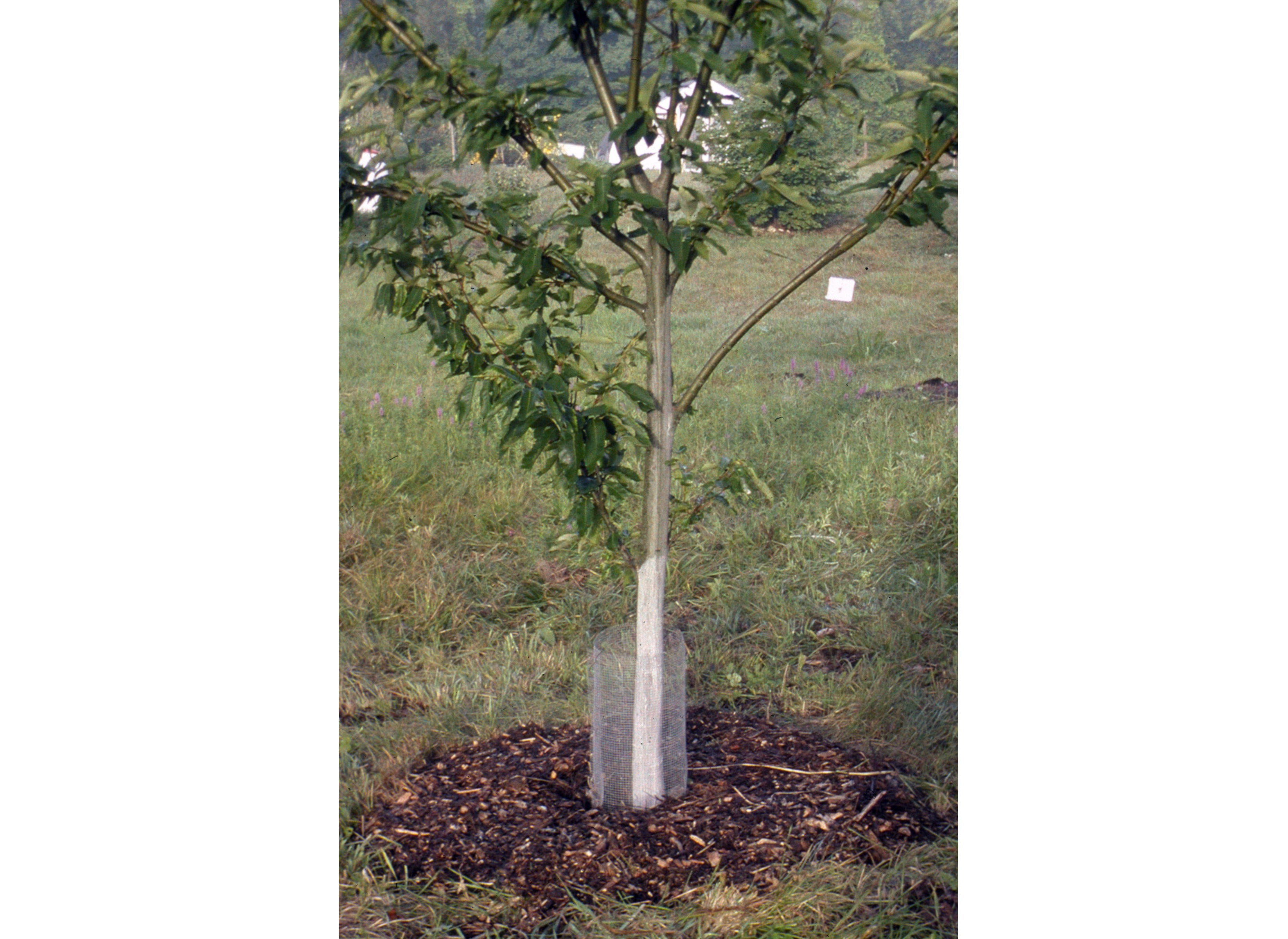Young trees need some dressing up for winter protection
Young trees need protection during the winter from animals, cold, dryness and sunscald

Your support helps us to tell the story
From reproductive rights to climate change to Big Tech, The Independent is on the ground when the story is developing. Whether it's investigating the financials of Elon Musk's pro-Trump PAC or producing our latest documentary, 'The A Word', which shines a light on the American women fighting for reproductive rights, we know how important it is to parse out the facts from the messaging.
At such a critical moment in US history, we need reporters on the ground. Your donation allows us to keep sending journalists to speak to both sides of the story.
The Independent is trusted by Americans across the entire political spectrum. And unlike many other quality news outlets, we choose not to lock Americans out of our reporting and analysis with paywalls. We believe quality journalism should be available to everyone, paid for by those who can afford it.
Your support makes all the difference.My young trees are decked out in their winter finery: arboreal attire, perfumes and cosmetics that will protect them through the winter.
Insects and disease-causing fungi are dead or dormant, but larger, furrier animals now pose a threat. Deer rabbits and mice are eager to gnaw on succulent stems, bark and roots.
And then there’s cold weather to dry out or sunscald the trees.
Evergreens are most susceptible to drying out because they lose water through their leaves all winter long. Sunscald, caused by fluctuations in bark temperature, is most likely to occur on the southwest-facing bark because that’s where it’s last heated by day before the sun -- and temperatures -- plummet.
With their thick, tough bark and gnarly, old wood, older trees are better able to fend off animals and cold than are young trees.
So here’s what my well-accoutered, young trees are wearing to protect them from winter’s woes:
FOOTWEAR
For this, mulch is all the rage. Leaves, hay and straw insulate the soil against low temperatures and wide swings in temperature. Evergreens are especially thankful for mulch because it keeps more soil water unfrozen and, hence, accessible to roots during the winter.
Never pile mulch right up against tree trunks, though, or the trunks may rot. Mice will have not only sheltered living quarters, but bark on which to nibble right at home.
Which brings us ways to keep animals at bay: Down around a tree’s “ankle,” a legging of an 18-inch-long cylinder of 1/8-inch or 1/4-inch hardware cloth, pushed a bit into the ground, prevents mice and rabbits from gnawing at roots and bark near the base of the tree. You can purchase other kinds of bark protectors, such as various plastic meshes or wraps that spiral up the trunk.
SCENT
Higher up the tree, “perfume” fends off deer. For starters, I dangle a bar of deodorant soap in the branches -- one bar per tree, the cheaper the better. I’ve also used mesh bags containing wads of human hair, but my deer, at least, don’t seem to mind that perfume anymore. The efficacy of any perfume in keeping deer away depends on how many and how hungry they are, and how easy it is for them to get to neighbors' trees instead.
MAKEUP
In other winter tree wear, there are sprays that make trees taste bad to furry animals. Because these animals are vegetarians, many of these sprays are based on animal products such as eggs or milk. These animals also don’t like hot pepper. Commercial sprays are sometimes appropriately named (Deer-Away, Chew-Not, Hinder), sometimes not (Bobbex, Thiram).
The main problem with sprays is they wear off, so spraying must be repeated periodically through the winter, especially since animal feeding gets worse as winter wears on. Look for a spray that lasts the longest, typically about a month. Once again, the efficacy of such sprays depends on how many and how hungry the deer are, and what else is readily available to eat.
All well-dressed young trees should have some “makeup” on their trunks. A coat of white latex paint protects the bark from sunscald, reflecting sunlight so the bark does not heat up during the day. Paper or plastic tree wraps sold to fend off animals serve the same purpose.
I added bone meal — an organic fertilizer — to the paint I used last winter, as a friend had suggested that rabbits and mice, being vegetarians, would not gnaw on boney-tasting bark. They didn’t.
—-
Lee Reich writes regularly about gardening for The Associated Press. He has authored a number of books, including “Weedless Gardening” and “The Ever Curious Gardener.” He blogs at http://www.leereich.com/blog. He can be reached at garden@leereich.com.